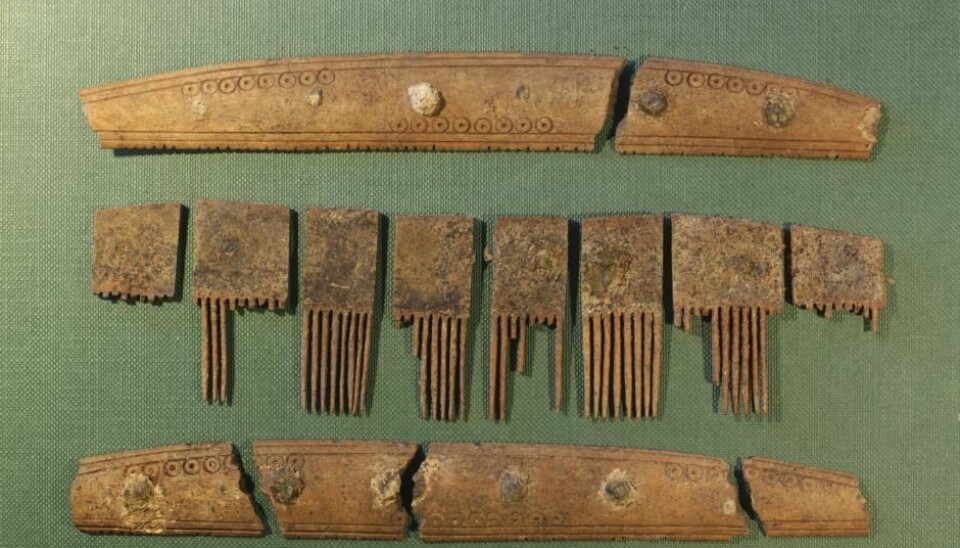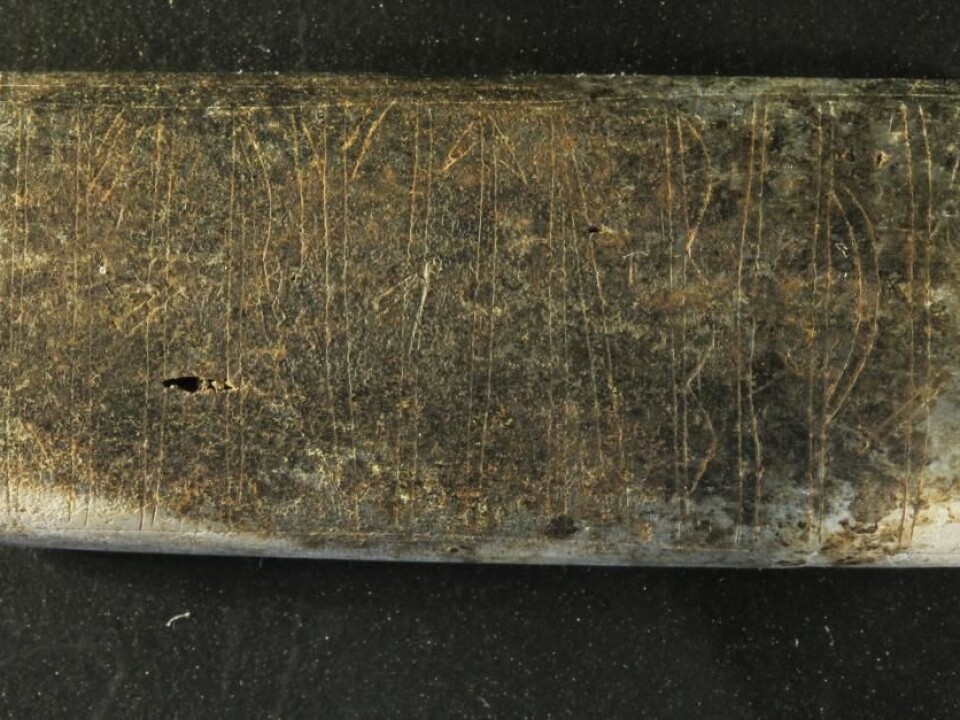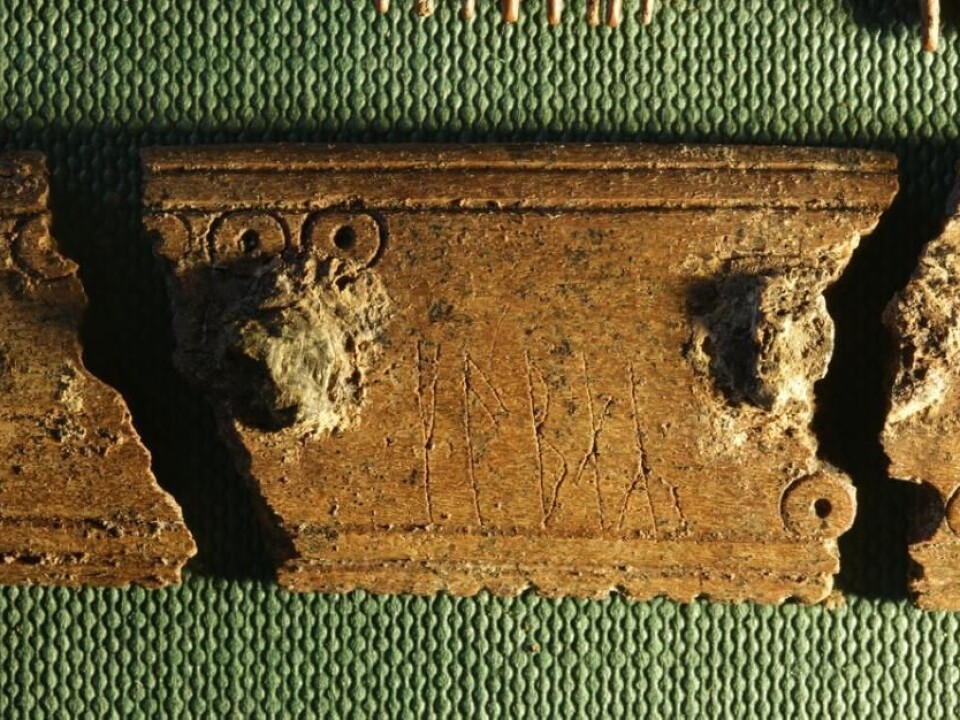
Unique Viking runes discovered in Denmark
“These are the runes we’ve been missing,” says archaeologist.
A comb with a runic inscription of the word “comb,” perhaps doesn’t sound so sensational. But it is.
The comb dates to the early Viking Age around 800 CE. Just a handful of runic texts from this period exists.
The comb was discovered during excavations of a Viking Age market place in Denmark’s oldest town Ribe.
Alongside the comb, archaeologists also discovered a runic inscription on a small plate of bone or antler.

Together, the two objects reveal details from a crucial period of Viking history, says archaeologist and excavation leader Søren Sindbæk from Aarhus University, Denmark.
“These are the runes we’ve been missing. We’ve waited generations to be able to dig into this,” says Sindbæk.
Read More: What secrets are hiding in these runes?
Casts light on how Vikings used runes
Archaeologists know that runes changed drastically at the start of the Viking Age. But they lack evidence to know how standardised written and spoken language was during this time, and what the Vikings actually used runes for.

The two new discoveries double the number of runes from Ribe, which was a centre of power during the early Viking Age.
The runes showed up during an excavation of the city’s market place.
“This is from a period where runes changed a lot. Just the fact that we now have two new inscriptions to add to the two existing ones from Ribe, expands our understanding of the different uses they had,” says Sindbæk.
For example, there is a difference between using language to communicate with others, such as when writing a letter, or to label a comb as a comb.
Another way of using language could be when a trader deals with another trader to communicate the price or the type of goods, or to summon the gods.
Read More: Isolated people in Sweden only stopped using runes 100 years ago
Runes belonged to a bronze caster
Sindbæk discovered the bone plate while he was excavating a small house that was known to have been a bronze foundry. Initially, he could not figure out what it was.
“The engraving is so fine that you can’t immediately see the text, but I thought to myself, ‘what if it is an inscription?’ But then I thought, ‘no, that’s too optimistic’.”
“It’s expertly crafted and we don’t find so many of its kind, so I couldn’t shake the idea. In the end I convinced myself that it had to be runes,” says Sindbæk, who was proven to be correct.
Read More: Scandinavia’s oldest cup mark rock carvings discovered on Bornholm
Runes inscribed by a steady hand
It was difficult to decipher the text as both ends were missing. Archaeologists do not know how big the original piece would have been, or in what context it was used. A guess is that it was once part of a casket, says Sindbæk.
The text lacks certain features, which mark the beginning and end of each word. Just like if we today wrote asentencewithoutanyspaces. It is decipherable, but difficult to read.
But this does not mean that the work was sloppy. The runes were clearly etched by a steady hand with detail indicative of an experienced engraver.
Read More: What can linguistics tell us about the Vikings in England?
Old runic alphabet out-competed itself
Archaeologists were especially interested to find out whether the script on the comb and plate were the new alphabet, which came into use at the beginning of the Viking Age.
Previously, the Vikings used a more complicated alphabet known as the 24 character futhark—itself a combination of the first six letters of the alphabet.
“It was built up so each rune had its own name and indicated the sound. But as the language developed, the names and sounds changed too, and in the end it was too difficult to remember the sound value of each rune and there was too much uncertainty in the message being conveyed,” says rune expert Lisbeth Imer from the National Museum of Denmark.
“At some point they decided not to use the old system anymore,” says Imer, who was invited to Ribe to study the two new discoveries and decipher whether it was the old or new alphabet.
You can see Imer studying the runes in the video above.
Cities were hotbeds for the new alphabet
The development of a new runic alphabet is revealed by Viking rune stones.
At the same time, they represent a unique time line from the runes and clearly illustrate when the new alphabet came into use, and that it was in fact alive and used.
Researchers have long presumed that the new alphabet system first appeared or developed in early Viking towns. But there were no specific finds to back up this hypothesis.
“If it wasn’t for rune stones then we wouldn’t have many finds from the 9th century. The fact that the Vikings constructed a new alphabet is secondary evidence that runes were much in use in the 9th century,” says Imer.
The excavation is a part of the research project “Northern Emporium,” financed by the Carlsberg Foundation.
---------------
Read more in the Danish version of this article on videnskab.dk
Translated by: Catherine Jex






